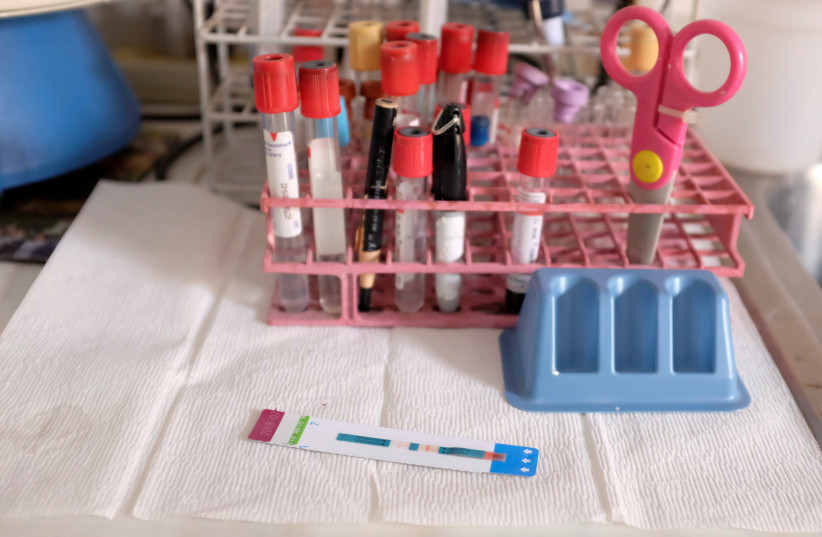The number of HIV carriers in Israel in the last two years has increased beyond the forecasted numbers, according to Prof. Itzchak Levy, director of the HIV/AIDS center at Sheba Medical Center, who spoke on World AIDS Day, which took place on Friday.
"The AIDS epidemic is still with us," Levy said. "To end this epidemic, the World Health Organization has declared that 95% of carriers must be diagnosed in time, and at least 95% must receive optimal treatment.
"Unfortunately, one-third of patients are still diagnosed late. It is important to increase awareness of the importance of HIV testing among the general population as well as medical professionals," he said.
According to figures released recently by the Health Ministry based on data from local health departments, HIV laboratories, HIV centers, Israel Center for Disease Control and health funds, between 1981 and 2021, some 11,139 new cases of HIV/AIDS were identified in Israel. Of those, almost a sixth of the patients (1,813: 16.3%) developed AIDS.
Accounting for 1,746 fatalities and 1,007 who are confirmed or assumed to have left Israel, some 8,386 individuals were registered as living with HIV/AIDS in Israel at the end of 2021.

HIV cases in Israel
There were 367 new cases reported to the Health Ministry in 2021, slightly more than the 362 cases reported in 2020, an increase of 0.8%. HIV incidence remained at 3.9 cases per 100,000 population in 2021, the report said, based on population data at the end of the year from the Israel Central Bureau of Statistics.
A statistical report - compiled by Maccabi Health Services' KSM Research and Innovation Center headed by Dr. Tal Patalon, in collaboration with Levy - showed that effective treatments implemented by the Israeli health system over the last decade have brought about a dramatic decrease in mortality and have increased the life expectancy of patients living with HIV who are members of Maccabi.
In 2019, the health basket incorporated PrEP (pre-exposure prophylaxis), a preventative regimen comprising two drugs. This treatment targets individuals at a heightened risk of HIV exposure who are not carriers, significantly lowering the risk of infection when taken daily consistently.
Approximately 94% of individuals seeking PrEP treatment within the Maccabi healthcare network are male, and around 73% of those initiating treatment fall within the 18-39 age group at the time of their first usage of the drug, the KSM survey said.
The predominant age demographic among HIV/AIDS patients is those aged 50 and above, constituting 40% of the total patient population.
Moreover, the survey showed that there are more than eight times more men than women with HIV in the central region in general.
Receiving PrEP treatment, therefore, is also more common in the center of the country, Levy explained.
"One explanation is that the number of men who have sex with men is higher in the central part of the country," Levy said. "However, it may also be that there is more awareness, and the number of doctors licensed to administer PrEP is higher in this region.
"Therefore, steps should be taken to increase awareness in the periphery as well."
